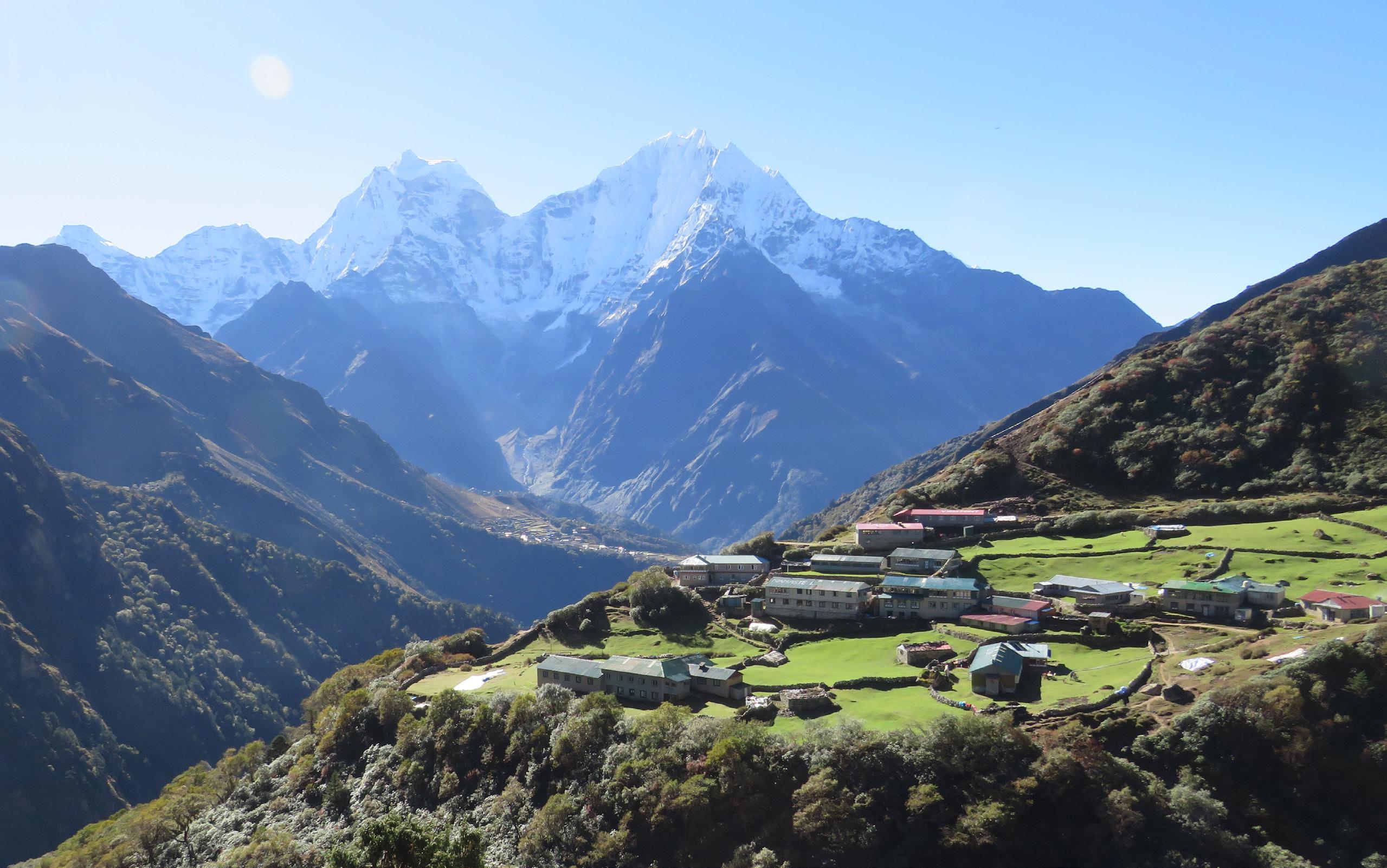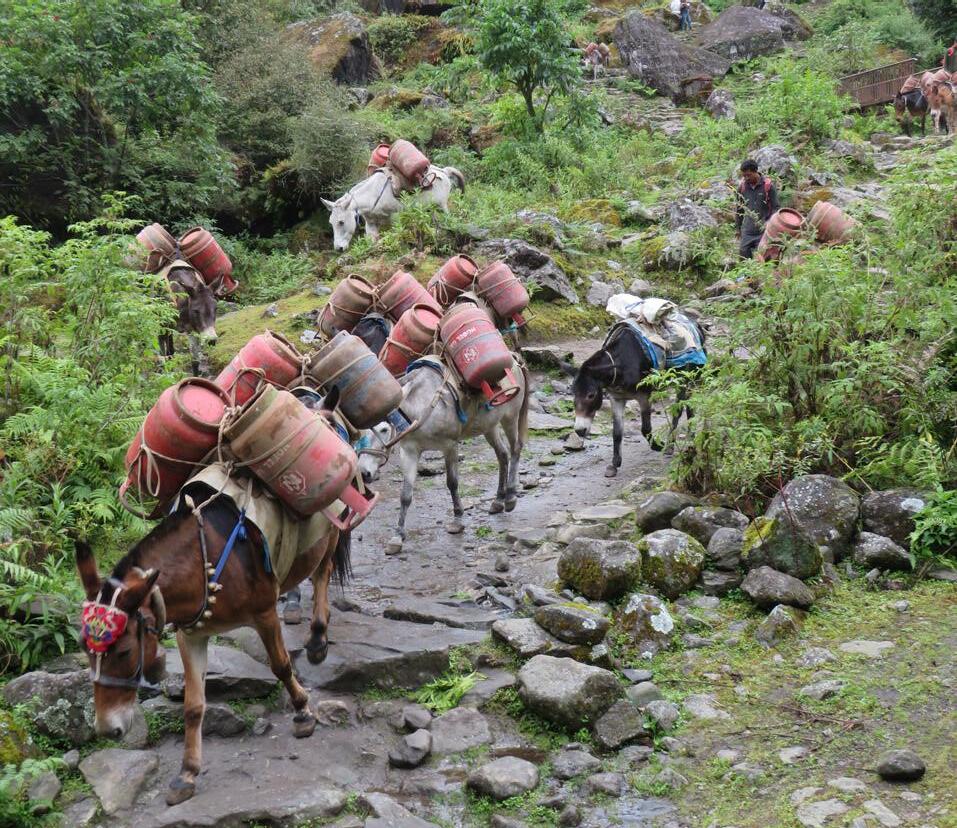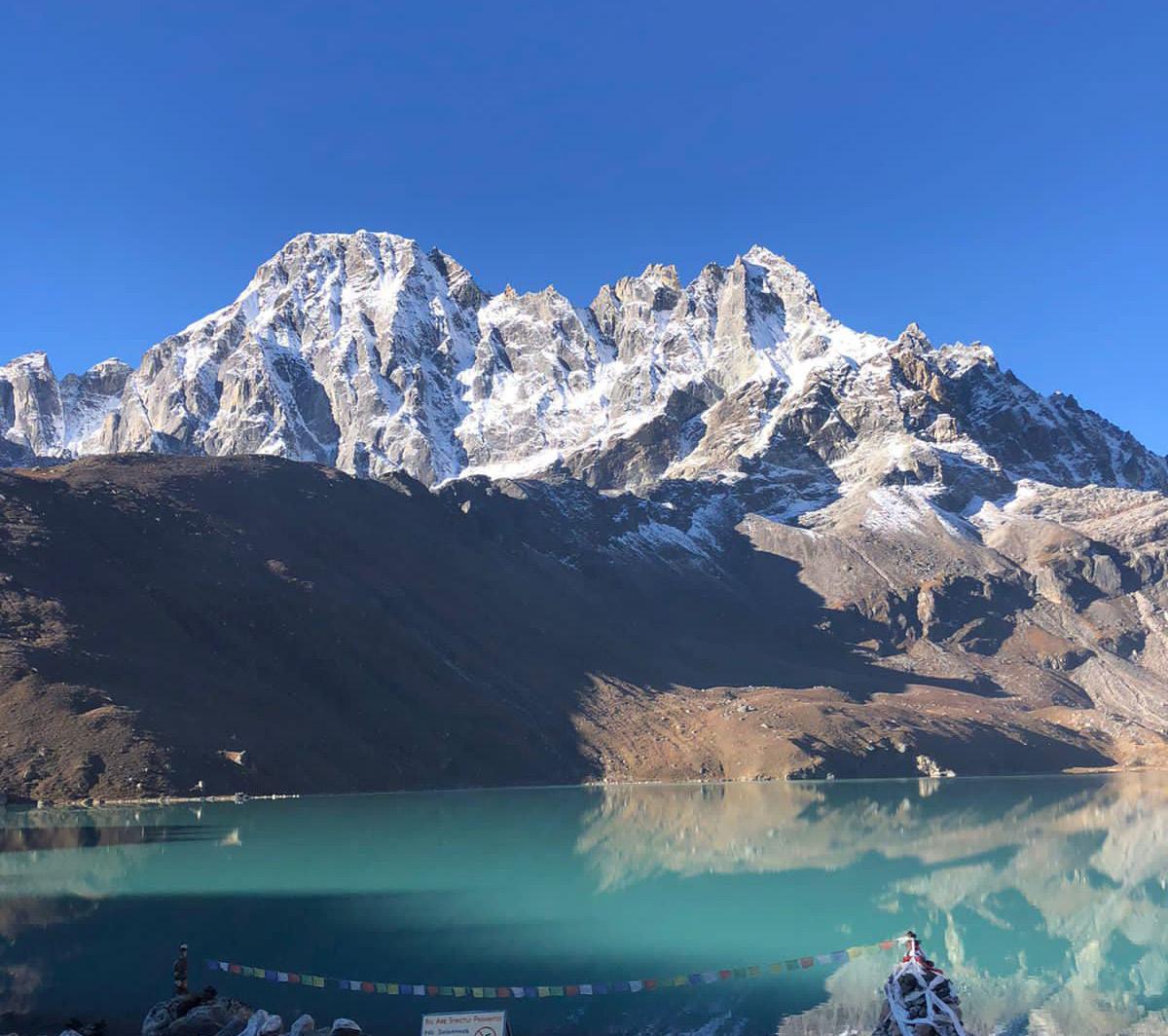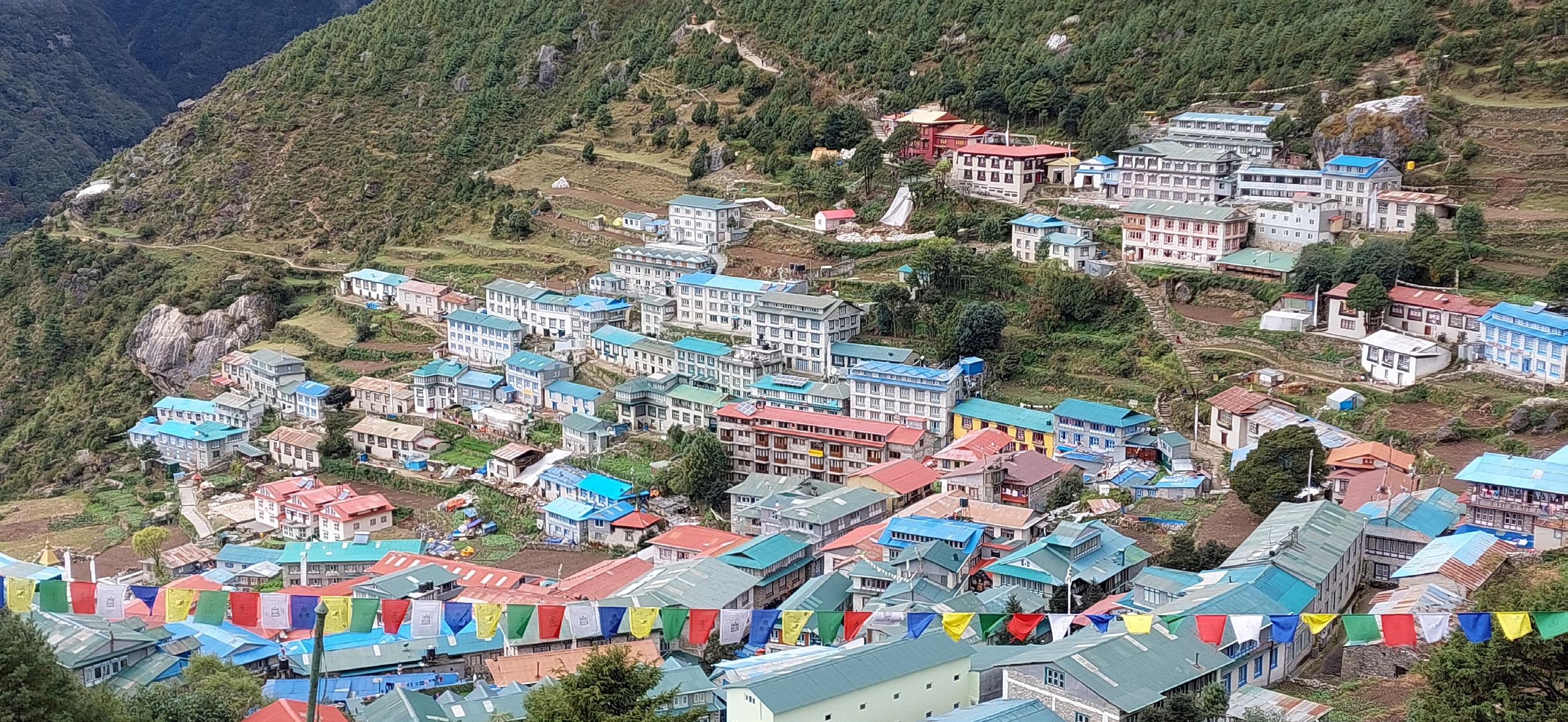
9 minute read
A Himalayan Adventure
Lt-Colonel Ian Hutson is once again drawn back to the Himalayas with all its wonder, majesty, mystery and pure mountain air. He shares with readers his latest trek to the mountains that make up some of the highest in the world. He also shares about the changing world of Himalayan communities.
WORDS Lt-Colonel Ian Hutson
In October of 2023, I went trekking in the Himalayas for the fourth time. Probably a surprise to many of my friends given that I was caught in a storm and rescued by helicopter the first time I went there—almost exactly 10 years previously!
Along with a group of seven other trekkers, as well as with Sherpa guides and porters, we set off from Kathmandu to start our trek with a 10-hour drive to Phaplu, followed by an 8-hour four-wheel drive over some extremely steep, narrow and often slippery tracks. All this to avoid the irregularity of flying a brief hour or so to the Lukla Airport (aka Tensing–Hillary Airport) which is often closed for days at a time due to mountain mist or other weather.
Yaks, naks and jhopkya
Our group’s average age was around 64 years old—not exactly a group of youngsters! The first day or two were not promising, with rain dampening our spirits, especially having to walk in mud mixed with donkey faeces. No wondrous sights of mountains or wafting aroma of the clear mountain air just yet. We had entered another world, where donkeys and porters were the main means of transportation for the supplies going to the many guest houses that trekkers frequented and the more permanent local Sherpa communities. We saw many donkey trains, with as many as 50 in a train passing us at one time. Above a certain altitude the donkeys disappeared to be replaced by yaks (male), naks (female) or jhopkya (the result of breeding yaks and cows), which could operate at higher altitudes.
The weather improved and it hardly ever rained again for the other 14 to 15 days of trekking. What a joy! Stunning views, mountain air, the hospitality and culture of the local Sherpa people, guest houses with frequent stops for meals or refreshments alternating with some good stiff uphill climbs.
I had brought with me a book called Sherpas: Reflections in Change in Himalayan Nepal by James Fisher. It was published in the 1990s and a bit dated, but it helped me reflect on what the Sherpa world had been and what it is now. It was hard to believe that this world had been largely off limits up until the 1950s, followed by the 1960s when Sir Edmund Hillary began building the schools that the Sherpas requested of him. The climbing of Mount Everest by Hillary and Tensing and the building of the Lukla Airport to facilitate the building of the schools, opened up the Solukhumbu District of the Sherpa people. From then on, the number of tourists trekking through the region rose exponentially, becoming a key economic contributor to the region with a huge impact on the culture and life of the people there.
Meeting place of nationalities
After several days of trekking, we entered the Sagarmatha National Park. Sagarmatha is the Nepali name for Mount Everest—the Tibetan name is Chomolungma, which means ‘Goddess Mother of the World’. A little further on we arrived at Namche Bazar, the tourist centre for the region. Looking down onto this centre you get a spectacular view as it is situated in what looks like a steep amphitheatre with a proliferation of colourful lodges. Here, there are many shops with all sorts of touristy mementos and trekking gear for sale. I got my hair cut at the local barber there and, as we walked the streets, we got to hear the accents and languages of the many nationalities visiting the area: European, Asian, North American and, of course, Nepalese.
We had a rest day here and visited the Tenzing Norgay Visitor Centre–Museum and the Sherpa Culture Museum, where we were able to see reflections of Himalayan mountain history and especially that of the Sherpa people. It was interesting to know that the Sherpas had not settled into the Solukhumbu District until between 400–500 years ago, seemingly escaping persecution or unrest in Tibet. Apparently, there were no previous occupants of the land living there back then. Not surprising, because to eke out a living in such steep mountainous terrain must have looked like an impossible task—but somehow these hardy people made it work.
Rarefied air
The next day we set off, taking a separate path from the more well-known Everest Base Camp trek, so not quite as many trekkers. Our destination was the Goyko area, with pristine lakes over 4700 metres high. Above them was the high peak of Gokyo Ri which promised a vista of Everest and the Ngozumpa glacier, the largest and longest glacier of the Himalayas among many other mountains, four of which are above 8000 metres: Mount Everest, Lhotse, Makalu and Cho You.
The arrival at Gokyo was both one of my highlights and a personal disappointment of the trek. The lakes are beautiful, the surrounding mountains are stunning, but it was here that I was afflicted by altitude sickness for the first time ever. The night before the climb to Gokyo Ri, I began to experience significant stomach ache and nausea, along with a degree of disorientation. As much as I wanted to climb to Gokyo Ri, it didn’t seem advisable considering just a day ago we had all watched as a Spanish man with altitude sickness was helicoptered down the mountains for his own safety.
In the end, only three of our group made the climb up to Gokyo Ri to see the stunning views that a perfect day turned on for them. By all reports it had been a hard climb that was more than compensated for by the amazing views.
On their return it was decided by the tour guide, Ang Pasung Sherpa, that we needed to descend that same day for the sake of those of us who were suffering from altitude sickness—myself and one other of our group. So began our return journey one day ahead of schedule. My health seemed to improve incrementally as we descended, so that by the end of that day I was already beginning to feel a lot better.


On our descent, I encountered one trekker who greeted me as a New Zealander, very surprising given nothing I wore identified me as such. However, one of our group confidently suggested, noting my appearance, that ‘a tall, rangy and slightly unkempt person had a bit of a familiar Hillary look about them, don’t you think?’ A bit of a back-handed compliment I thought.
One the highlights of our trek on the way down was a visit to the village of Khumjung. This was a relatively large and impressive village. It was a place the locals lived more permanently and was not so much a part of the tourist trail. Here we were able to visit a Buddhist monastery with its ornate and colourful interior. Its most famous exhibit was what was purported to be a Yeti scalp. This was something for which Edmund Hillary had sought scientific verification. The results came back suggesting the fur came from something akin to a thar (mountain goat). Nevertheless, my son— also on the trip—who had been excited by this when he read about the Yeti as a youngster was naturally pleased to have seen the actual thing in person.
Hillary’s legacy and the Sherpas
Also in Khumjung was the local Hillary Secondary School, with a bust of Sir Edmund Hillary in the playground and a museum outlining Hillary’s involvement in it being built—the first school among many he was instrumental in starting in the region. As New Zealanders, we felt some reflected pride in this village and region because of Hillary’s achievements and his almost god-like status there.

The rest of the trek was largely retracing our steps through now-familiar villages, staying sometimes in the same guest houses, along with the change in transport back from naks to donkeys. The views could be enjoyed with somewhat more ease as the tracks were now generally downhill.
This gave me time to reflect on the impact of the influx of trekkers and mountaineers on the Sherpa people and this region. What seemed obvious was they had done comparatively well out of the trekking. They had income available to them more than many other similar people in Nepal. However, many of the (mainly) men who were guides or porters spent inordinate amounts of time away from their families, with injury and death not uncommon. Many people, like Ang Pasung Sherpa our guide, were guides in the alps of Europe as well as the Himalayas. The young were leaving for Kathmandu or further afield, leaving some of the villages—especially those outside the main tourist tracks—with empty houses, less young people and less help for the agricultural labour needed in the region. The desire for consumer goods, the need for an income to pay for them and the draw of work beyond subsistence living has drawn so many away from the simple rural life of the villages. The changing face of the Sherpa culture was visible in the mix of clothing styles, from the latest designer trekking clothing to the sometimes colourful, sometimes weathered, traditional Sherpa clothing.
One thing seemed apparent though: the Sherpa people have a strong culture and identity that they are proud of, possibly supported by the generally strong positive view that Westerners have consistently held of them, as heroic, compassionate, industrious, humorous, genial and friendly people.
Land of contrasts and extremes
As we left, again by four-wheel drive vehicles, as Lukla Airport was closed, I was struck once more by this beautiful region and people, the way it has been opened up and yet remains inaccessible by road— both open and shut.
I can’t help reflecting on the many conversations on the trek, the moments of pressure from physical excursion, the weary bodies and unexpected events, all these helped each person to get to know themselves and each other better. Maybe it is the hardship and privations that make moments of wonder and joy seem so much more intense; being overwhelmed by the beauty and magnificence of the mountains with the clear pure air. It is what makes trekking such a spiritual thing. Sometimes in those moments, I feel I see the very face of God.
To learn about Ian’s helicopter rescue on a previous trip, go to salvationarmy.org.nz/windows-heaven










